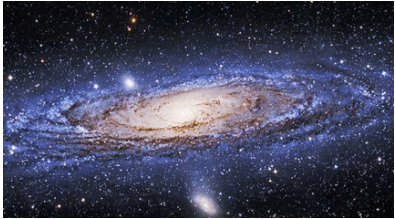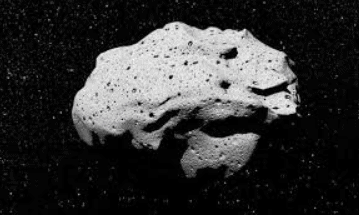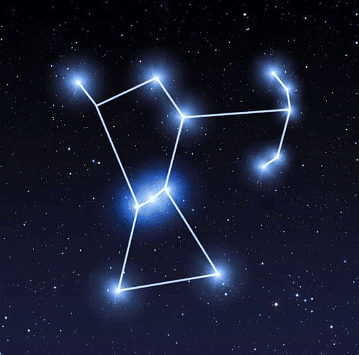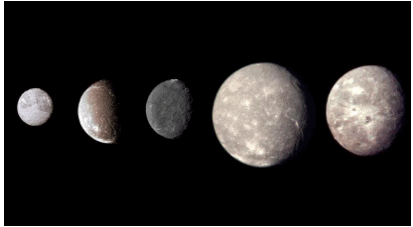Class 6 Geography Chapter 1 Question Answers - The Earth in the Solar System
Q1: How many days does the moon take to complete one spin?
Ans: 27 days.
Q2: What is another name for the Milky Way galaxy?
Ans: Akash Ganga.
 Milky Way
Milky Way
Q3: Why is the Milky Way galaxy named Akash Ganga?
Ans: The Milky Way galaxy is often Known as Akash Ganga. This is because at the clear night, the entire galaxy looks like a white and wide river, especially like river Ganga.
Q4: Name a constellation.
Ans: Saptarishi.
Saptarishi, also known as the Big Dipper or Ursa Major, is a constellation in the night sky.
Q5: Name the celestial body nearest to Earth.
Ans: Moon.
Q6: What are celestial bodies? Provide an example.
Ans: Celestial bodies are objects in the sky, such as the sun, moon, and stars, that are visible from Earth.
Q7: Why we are unable to see the moon and other stars during the day?
Ans: The Sun is the star that is nearest to the Earth. During the day, the Sun’s light is so bright that we cannot see the light of other stars. Thus, they are not visible during the day.
Q8: The shape of Earth’s is ______.
Ans: Geoid.
The shape of the Earth is often described as a geoid, which is essentially a three-dimensional representation of Earth's gravitational field. The geoid is not a perfect sphere due to variations in gravitational forces and the distribution of mass on Earth.
Q9: Name the planets with rings around them.
Ans: Jupiter, Saturn, Uranus, and Neptune.
Q10: We are a part of the Milky Way galaxy. True/False
Ans: True.
The Milky Way is the spiral galaxy that includes our solar system, and Earth is located within this galaxy.
Q11: Give an example of a satellite.
Ans: Moon.
Q12: Name the celestial bodies that are made up of gases and emit their own heat and light.
Ans: Stars.
Q13: What is another name for the Pole Star?
Ans: North Star.
Another name for the Pole Star is the North Star. It is also known as Polaris, and it is located very close to the north celestial pole in the northern sky.
Q14: The Pole Star always indicates the ______ direction therefore it is called north star.
Ans: North.
Q15: Name the celestial bodies that do not have their own light and are lit by the light of stars and revolve around the stars.
Ans: Planets.
Q16: What are Planetoids?
Ans: The larger Asteroids are called planetoids.
 Planetoids
Planetoids
Q17: For how many times in a month the full moon is visible?
Ans: Once.
A full moon is typically visible once in a month. The lunar cycle, from one full moon to the next, is roughly 29.5 days.
Q18: What are Constellations?
Ans: Constellations are various patterns formed by different groups of stars.
Q19: Name the star nearest to the Earth.
Ans: Sun.
Q20: Why the moon is called a satellite?
Ans: It revolves around planet Earth.
Q21: The planet that takes a minimum of days to revolve around the sun is ______.
Ans: Mercury.
The planet that takes a minimum number of days to revolve around the Sun is Mercury. It has the shortest orbital period among all the planets in our solar system.
Q22: The inner planets are demarcated from the outer planets by ______ belts.
Ans: Asteroids.
The inner planets (terrestrial planets) are not demarcated from the outer planets (gas giants) by asteroid belts. The inner and outer planets are separated by the asteroid belt in our solar system.
Q23: Why do stars look tiny and do not emit heat or light like the sun?
Ans: Stars look tiny because they are very far from us. They do emit heat and light, but we do not feel it due to their vast distance.
 constellation
constellation
Q24: What are constellations, and give an example.
Ans: Constellations are patterns formed by different groups of stars. An example is the Saptarishi (Big Bear) constellation.
Q25: Name the planet which is called the terrestrial planets and is made up of rocks and metals.
Ans: Mercury.
While Mercury is indeed a terrestrial planet made up of rocks and metals, the term "terrestrial planets" collectively refers to the inner planets of our solar system, which are Mercury, Venus, Earth, and Mars.
Q26: Ursa Major is a ______.
Ans: Constellation.
Q27: Sapota Rishi is also known as small bear. True/False
Ans: False.
Q28: Name the instrument used to see the celestial bodies.
Ans: Telescope.
The instrument used to see celestial bodies, including stars, planets, and galaxies, is called a telescope. Telescopes gather and magnify light, allowing astronomers to observe distant objects in the night sky with greater detail.
Q29: On new moon night, we can see ______ moon.
Ans: No.
On a new moon night, we cannot see the moon. A new moon occurs when the moon is positioned between the Earth and the Sun, with the side of the moon illuminated by the Sun facing away from the Earth. As a result, the side of the moon visible from Earth is not illuminated, making it appear dark and nearly invisible in the night sky.
Q30: Name the common name that can be given to the various planets, stars, asteroids etc.
Ans: Celestial bodies.
The common name that can be given to various planets, stars, asteroids, and other objects in the sky is celestial bodies. This term encompasses all natural objects in space.
Q31: Name the planet with a maximum number of moons.
Ans: Saturn.
While Saturn has a significant number of moons, the planet with the maximum number of moons in our solar system is Jupiter. Jupiter has over 80 known moons, making it the planet with the largest moon system.
Q32: Name the life-supporting gas in the air on the earth.
Ans: Oxygen.
Q33: Uranus has about ______ moons.
Ans: 27 moons.
 Five Largest moons of Uranus
Five Largest moons of Uranus
Q34: How many days does Mercury take to complete one round along its orbit?
Ans: 88 days.
Q35: Name the celestial body known as the natural satellite of the Earth.
Ans: Moon.
Q36: How do people determine directions at night, and what is the role of the North Star?
Ans: In ancient times, people used stars for direction, and the North Star (Pole Star) indicates the north direction. The Saptarishi helps locate the position of the North Star.
Q37: Name the eight planets in our solar system in order of their distance from the sun.
Ans: Mercury, Venus, Earth, Mars, Jupiter, Saturn, Uranus, Neptune.
Q38: When the meteor falls on the earth, it creates ______.
Ans: Craters.
Q39: Name some of the Indian satellites in space.
Ans: INSAT, Aryabhatta, IRS, EDUSAT, etc.
Q40: Name the inner planets and the biggest planets.
Ans: Inner Planets: Venus, Mercury, Earth and Mars.
biggest Planet: Jupiter.
FAQs on Class 6 Geography Chapter 1 Question Answers - The Earth in the Solar System
| 1. What is the position of Earth in the Solar System? |  |
| 2. How many planets are there in the Solar System? |  |
| 3. What is the role of the Sun in the Solar System? |  |
| 4. Why is Earth considered unique in the Solar System? |  |
| 5. How does Earth's position in the Solar System affect our climate? |  |






















